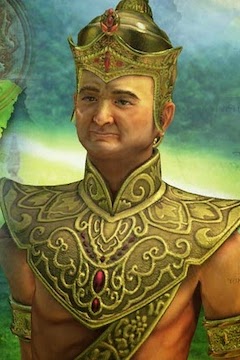
The Sukhothai Period (1238 to 1438 CE). A pivotal era in Thai history during which the first independent Thai kingdom was established in the central mainland of Southeast Asia. Founded by liberating itself from the Khmer Empire’s hegemony, the kingdom of Sukhotai is revered as the cradle of Thai civilization, ushering in monumental developments in Thai art, architecture, language, and governance.
Its cultural and political innovations laid the foundational identity for the Siamese and, subsequently, the modern Thai nation-state. The period is often nostalgically recalled as a “golden age” of prosperity, religious piety, and benevolent rule, an image heavily promoted in later historical narratives.
History and Foundation
The rise of Sukhotai is intrinsically linked to the gradual decline of the Khmer Empire, which had controlled much of the region from its capital at Angkor.
In 1238, two local Thai chieftains, Pho Khun Bang Klang Hao and Pho Khun Pha Muang, led a successful rebellion against Khmer governance. Pho Khun Bang Klang Hao was crowned king, taking the regnal name Sri Indraditya, and establishing the Pho Khun dynasty.
The new kingdom rapidly expanded its influence through a combination of military conquest and diplomatic alliances, absorbing surrounding muang (city-states). The zenith of Sukhotai’s power and territorial extent was achieved under its third monarch, Ramkhamhaeng the Great (r. c. 1279–1298), who is credited with vastly expanding the kingdom’s borders and establishing its core cultural tenets.

Ramkhamhaeng the Great
The reign of King Ramkhamhaeng is considered the apogee of the Sukhotai Period.
His kingdom, as documented on the famed Ramkhamhaeng Inscription (c. 1292), is described as prosperous and abundant, with a ruler who was accessible to his people—a bell was placed in front of the palace for any citizen to ring and bring grievances directly to the king.
He is most famously credited with the creation of the Thai alphabet, which he allegedly devised in 1283, forming the basis of the modern Thai script.
His reign also saw the strengthening of Theravada Buddhism as the state religion, with strong support for the monkhood (Sangha) and the importation of Buddhist traditions from Sri Lanka.
Art and Architecture
The Sukhotai Period produced a distinctive and graceful artistic style that broke from the rigid, god-king iconography of the Khmer.
Sukhotai art is particularly renowned for its sculptural representations of the Buddha, which are characterized by elegant, sinuous forms: the walking Buddha image, with one hand in the abhaya (fear-not) mudra, is a unique and iconic invention of this era.
Other hallmarks include a flame-like ushnisha (cranial protuberance) and a gentle, smiling countenance. Architecturally, the period moved away from massive temple mountains.
Instead, Sukhotai architecture featured upward-curving, lotus-bud-shaped chedis (stupas), which were often mounted on stepped bases. The ruins of the Sukhotai Historical Park, a UNESCO World Heritage Site, provide the finest examples of this architectural style, including Wat Mahathat, the kingdom’s central temple.
Governance and Society
The Sukhotai Kingdom operated under a system often described as a paternalistic kingship or a mandala system, where power radiated outward from a central core, with loyalty of vassal states fluctuating. The king was viewed as a dharmaraja, a righteous ruler who governed according to Buddhist principles. Society was primarily agrarian, with a noted emphasis on freedom; the Ramkhamhaeng Inscription famously states, “There are fish in the water and rice in the fields,” and the king did not levy tolls on trade, encouraging economic activity.
Decline and Legacy
Following the death of Ramkhamhaeng, the kingdom’s power gradually waned. Vassal states began to break away, and the rising power of the Ayutthaya Kingdom to the south proved to be a formidable rival. Sukhotai became a tributary state of Ayutthaya in the late 14th century and was fully absorbed by 1438.
Despite its political end, the Sukhotai Period’s legacy is profound. The Thai alphabet endures. The artistic styles developed during this era influenced all subsequent Thai art.
Furthermore, the idealized memory of Sukhotai as a land of freedom and just rule became a powerful symbol for modern Thai nation-building in the 20th century, promoted by figures like King Rama IV (Mongkut) and especially King Rama V (Chulalongkorn) to foster a sense of national identity and unity.